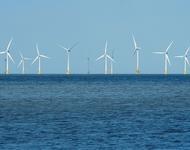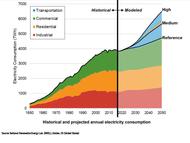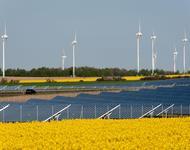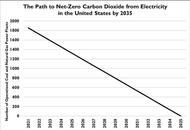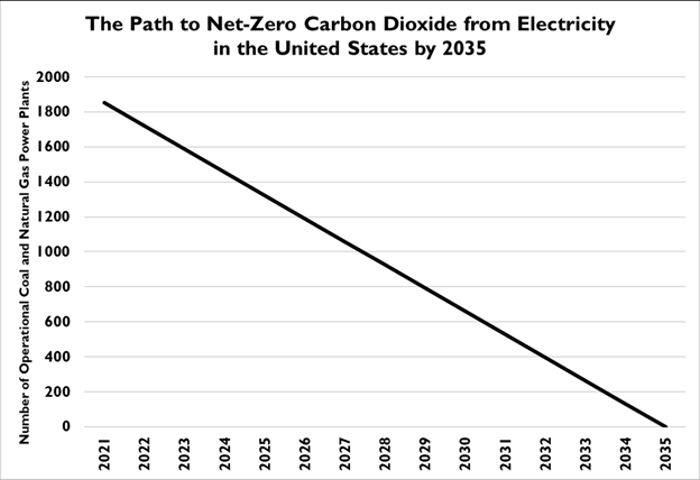We begin by reviewing the measurement unit for electric demand and consumption.
1 Terawatt = 1 trillion watts
= 1 billion kilowatts
= 1 million megawatts
= 1 thousand gigawatts
1 Terawatt-hour = 1 trillion watt-hours
= 1 billion kilowatt-hours
= 1 million megawatt-hours
= 1 thousand gigawatt-hours
At the end of 2020, the United States had 1,117,475 MW—or about 1.12 billion kilowatts (kW)—of total utility-scale electricity generating capacity and about 27,724 MW—or nearly 0.03 billion kW—of small-scale solar photovoltaic electricity generating capacity.
US electricity consumption in 2020 was approximately 4,000 Terawatt-hours.
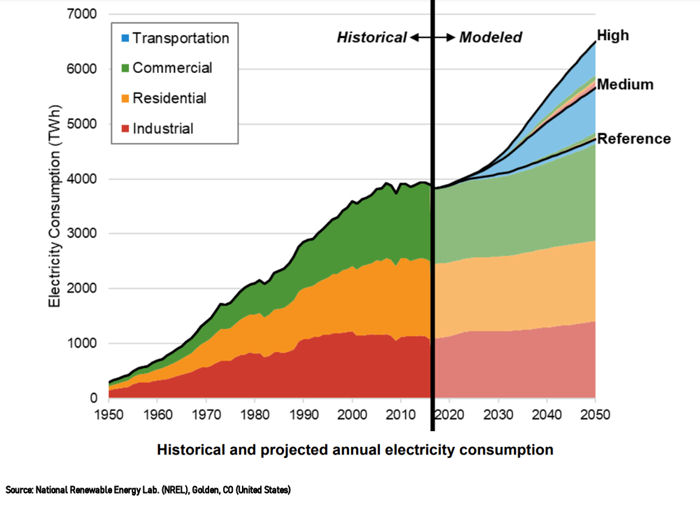
The Biden Administration has established a 30 GW target for offshore wind generating capacity by 2030. General Electric produces the Haliede-X offshore wind turbine in 12-14 MW capacities, with a reported capacity factor of ~60%. As an illustration, let us assume that the entire 30 GW of capacity consists of GE 14 MW wind turbines.
Reaching the Administration’s offshore wind capacity target would involve installation of approximately 2150 wind turbines capable of producing approximately
30 GW * 60% * 8760 hrs. = 157,680 GWh
of electric power annually, or approximately
157,680 GWh / 4,000,000 GWh = ~4%
of US 2020 electric energy consumption and approximately 3.5% of projected 2030 electric energy consumption.
The proposed new offshore wind capacity is approximately 10% greater than the currently installed utility scale wind capacity of 27.7GW, which is approximately 2.5% of total US utility scale generating capacity.
It is common practice, when discussing wind and solar installations, to refer to the number of homes the system would be able to power. US EIA reports that the average US household consumes 11,000 kWh of electricity per year Therefore, the Administration’s 30 GW offshore wind capacity target would be sufficient to power
157,680 GWh = 157,680,000,000kWh / 11,000 kwh/home–year = 14,334,000
homes, based on the 60% capacity factor.
The wind turbines, when operating at full capacity, would produce more electricity than the served homes would require, providing surplus electricity to be stored for use by the served homes during periods when the turbines were not operating, or were operating below rated capacity, due to wind conditions. The duration of periods when wind conditions would not support full capacity operation and the duration of periods when wind conditions were insufficient to permit the turbines to operate would determine the electricity storage capacity required to assure stable, reliable grid operation.
Storing electric energy in grid-scale batteries for later use involves the loss of ~25% of the energy delivered to the batteries from the generation source. Grid-scale battery storage is currently very expensive, and it is more expensive the longer the period of time over which the battery must store the energy. Situations in which wind conditions might be unsuitable for turbine operation over one or more days require massive and massively expensive battery installations. Battery cost will likely continue to decline, though the pace and extent of the cost reductions is not currently predictable.
 The Right Insight is looking for writers who are qualified in our content areas. Learn More...
The Right Insight is looking for writers who are qualified in our content areas. Learn More...

